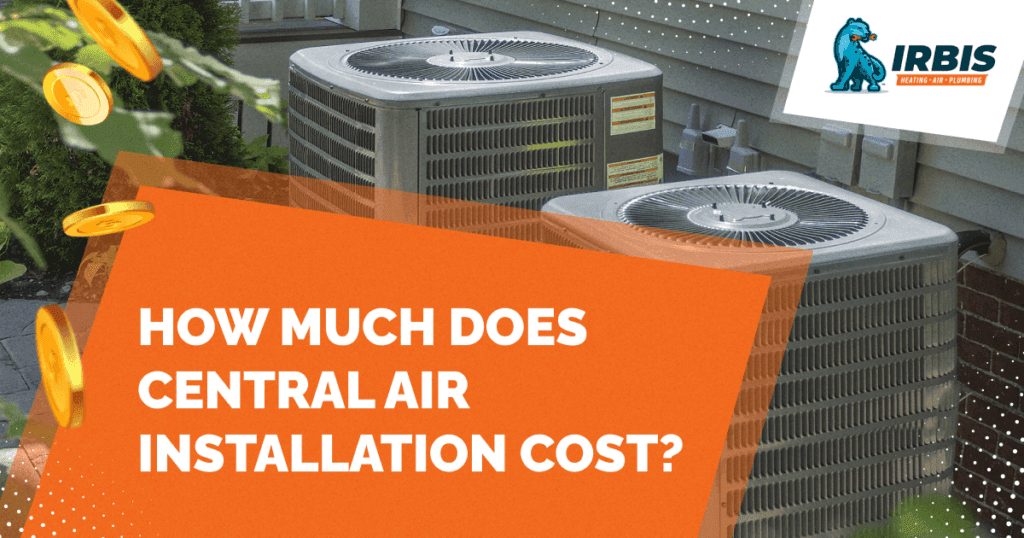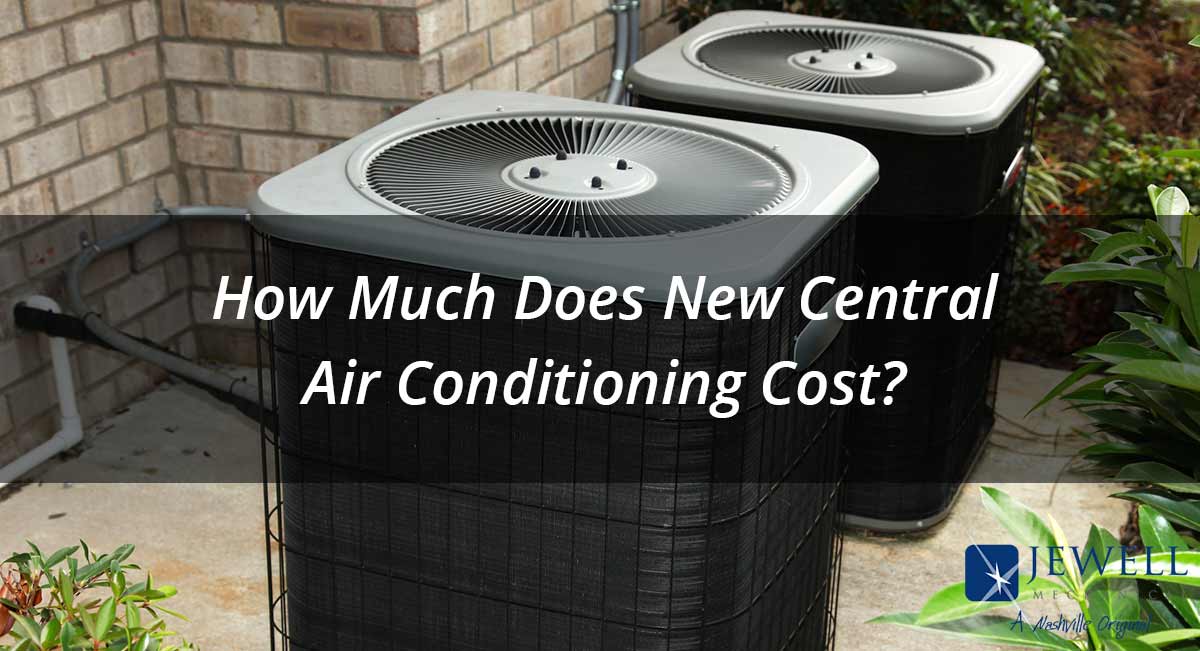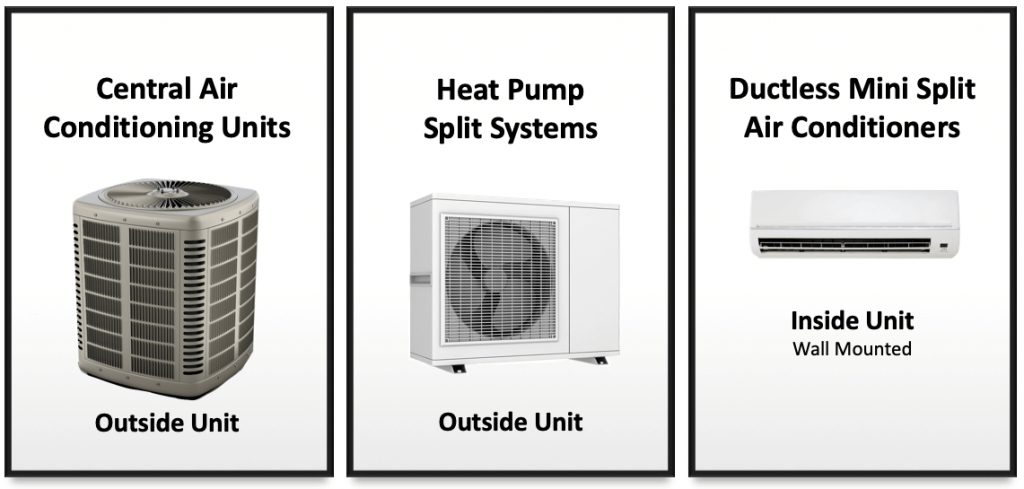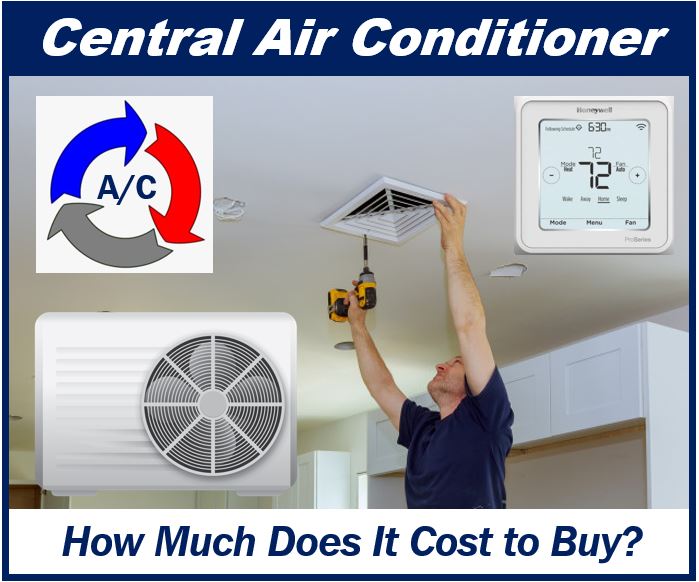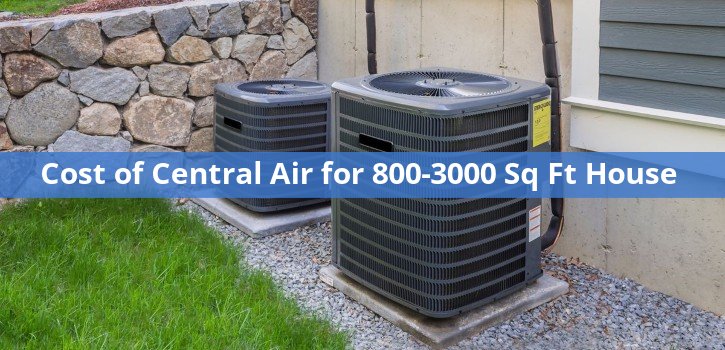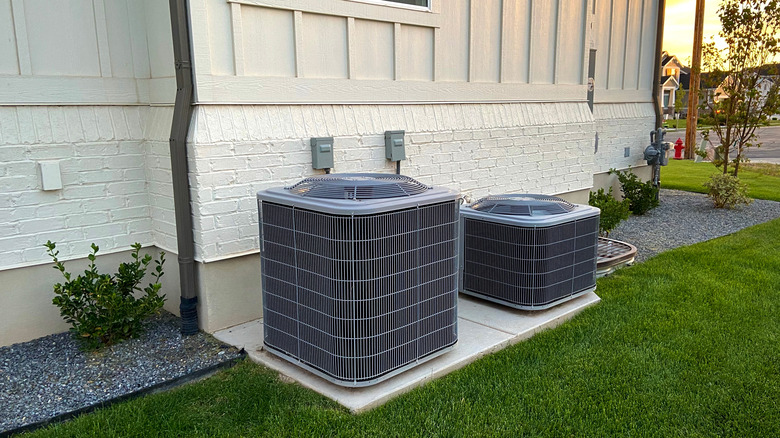How Much Does It Cost To Get Central Air

Frequently Asked Questions: Central Air Conditioning Costs
Planning to install central air conditioning? Understanding the costs involved is crucial. This FAQ provides answers to common questions, helping you budget and make informed decisions. We aim to provide clarity on the various factors influencing the final price, ensuring you're well-prepared for your air conditioning project.
Q1: What is the average cost to install central air conditioning in my home?
The average cost to install central air conditioning typically ranges from $3,000 to $7,000. However, this is a broad estimate. Several factors influence the final price, including:
- Size of Your Home: Larger homes require more powerful and expensive units.
- Efficiency (SEER Rating): Higher efficiency units (higher SEER ratings) cost more upfront but save money on energy bills long-term.
- Existing Ductwork: If you already have ductwork, the installation will be significantly cheaper. If ductwork needs to be installed, it can add thousands to the total cost.
- Brand and Model: Different brands and models have varying price points.
- Installation Complexity: Difficult installations (e.g., tight spaces, complex ductwork runs) will increase labor costs.
- Location: Labor and material costs vary by region.
- Permits and Inspections: Local regulations may require permits and inspections, adding to the overall cost.
To get a more accurate estimate, it's best to get quotes from multiple licensed HVAC contractors in your area.
Q2: How much does it cost to install central air if I don't have existing ductwork?
Installing ductwork is a significant expense. If your home doesn't have existing ductwork, the cost can easily double or triple the base installation price. Expect to pay anywhere from $6,000 to $15,000 or even more, depending on the size and layout of your home.
The ductwork installation process involves:
- Design and Planning: An HVAC professional will design a ductwork system optimized for your home's size and layout.
- Material Costs: Ductwork materials (metal or fiberglass) can be expensive.
- Labor Costs: Installing ductwork is labor-intensive, requiring cutting, fitting, and sealing ducts.
- Modifications: Walls, ceilings, or floors may need to be modified to accommodate the ductwork.
Alternatives to Consider: If installing ductwork is too expensive, consider ductless mini-split systems. While they may not cool your entire home as uniformly, they are a more cost-effective option when ductwork is not present.
Q3: What is SEER and how does it affect the cost of central air?
SEER stands for Seasonal Energy Efficiency Ratio. It's a measure of an air conditioner's cooling efficiency over a typical cooling season. The higher the SEER rating, the more efficient the unit, and the lower your energy bills will be.
Impact on Cost:
- Higher Upfront Cost: Units with higher SEER ratings generally cost more to purchase and install.
- Lower Operating Costs: While the initial investment is higher, you'll save money on your monthly energy bills. Over time, the savings can offset the higher upfront cost.
- Federal Regulations: The minimum SEER rating for new air conditioners varies by region. Be sure to check the regulations in your area.
Choosing the Right SEER: Consider your climate and how often you use your air conditioner. If you live in a hot climate and use your AC frequently, a higher SEER unit is a worthwhile investment. If you only use your AC occasionally, a lower SEER unit might be sufficient.
Q4: What other factors can influence the cost of central air installation?
Beyond the size of your home, ductwork, and SEER rating, several other factors can influence the cost of central air installation:
- Brand and Model: Some brands are known for their reliability and efficiency, commanding a higher price. Similarly, specific models may have advanced features that increase the cost.
- Installation Complexity: Difficult installations, such as those in tight spaces or with complex ductwork runs, will increase labor costs.
- Home's Insulation: Poor insulation can reduce the efficiency of your air conditioner, requiring a larger and more expensive unit to adequately cool your home. Consider improving your insulation before installing a new AC system.
- Electrical Upgrades: In some cases, your electrical panel may need to be upgraded to handle the increased electrical load of a new air conditioner. This can add to the overall cost.
- Smart Thermostats: While not essential, installing a smart thermostat can improve energy efficiency and allow you to control your AC remotely. This is an additional cost to consider.
- Warranty and Service Agreements: Factor in the cost of extended warranties or service agreements, which can provide peace of mind and protect your investment.
- Refrigerant Type: The type of refrigerant used in the AC unit can affect the price. Newer refrigerants are often more environmentally friendly but can be more expensive.
Remember to discuss all these factors with your HVAC contractor to get a comprehensive and accurate estimate.
Q5: How can I save money on central air installation?
Installing central air can be a significant investment, but there are ways to save money:
- Get Multiple Quotes: Obtain quotes from at least three different licensed and insured HVAC contractors. Compare their prices, services, and warranties.
- Consider Off-Season Installation: HVAC contractors may offer lower prices during the off-season (fall or winter) when demand is lower.
- Look for Rebates and Incentives: Check with your local utility company and government agencies for rebates and incentives on energy-efficient air conditioners.
- Choose the Right Size Unit: An oversized unit will cool your home too quickly and cycle on and off frequently, wasting energy. A properly sized unit will be more efficient and cost-effective.
- Improve Insulation: Improving your home's insulation will reduce the load on your air conditioner, allowing you to choose a smaller and less expensive unit.
- Consider a Lower SEER Rating: If you don't use your air conditioner frequently, a lower SEER unit may be sufficient and save you money upfront.
- Maintain Your Existing System: If you already have central air, regular maintenance (e.g., cleaning or replacing filters) can improve its efficiency and prolong its lifespan, delaying the need for a replacement.
By carefully considering these strategies, you can minimize the cost of your central air installation project.
Q6: Should I repair or replace my existing central air system?
Deciding whether to repair or replace your existing central air system depends on several factors:
- Age of the System: If your system is more than 10-15 years old, it may be nearing the end of its lifespan. Replacement is often the better option.
- Frequency of Repairs: If you're constantly needing to repair your system, it's likely becoming less reliable and efficient. Replacement may be more cost-effective in the long run.
- Cost of Repairs: If the cost of repairs is more than 50% of the cost of a new system, replacement is generally recommended.
- Energy Efficiency: Older systems are typically less energy-efficient than newer models. Replacing your system with a high-efficiency unit can save you money on your energy bills.
- Refrigerant Type: Older systems may use R-22 refrigerant, which is being phased out due to environmental concerns. If your system uses R-22 and needs a refrigerant refill, the cost can be very high. Replacement is often the best option in this case.
Get a Professional Opinion: Consult with an HVAC contractor to assess the condition of your system and provide recommendations. They can help you weigh the costs and benefits of repairing versus replacing your system.
Q7: What are the ongoing maintenance costs for central air conditioning?
To keep your central air conditioning system running efficiently and reliably, it's important to factor in ongoing maintenance costs:
- Air Filter Replacement: Replace your air filter every 1-3 months, depending on the type of filter and the air quality in your home. Filters typically cost between $5 and $20 each.
- Professional Maintenance: Schedule a professional maintenance checkup at least once a year. This typically includes cleaning the coils, checking the refrigerant levels, and inspecting the system for any potential problems. Professional maintenance can cost between $100 and $300 per year.
- Coil Cleaning: Over time, the coils in your AC unit can become dirty, reducing its efficiency. Cleaning the coils can improve performance and lower energy bills.
- Duct Cleaning: If your ductwork is dirty or dusty, it can reduce airflow and affect the efficiency of your system. Duct cleaning may be necessary every few years, depending on the condition of your ducts.
- Repairs: Even with regular maintenance, unexpected repairs can occur. Set aside a budget for potential repairs, which can range from a few hundred dollars to several thousand dollars, depending on the nature of the problem.
By investing in regular maintenance, you can extend the lifespan of your central air system and minimize the risk of costly repairs.
